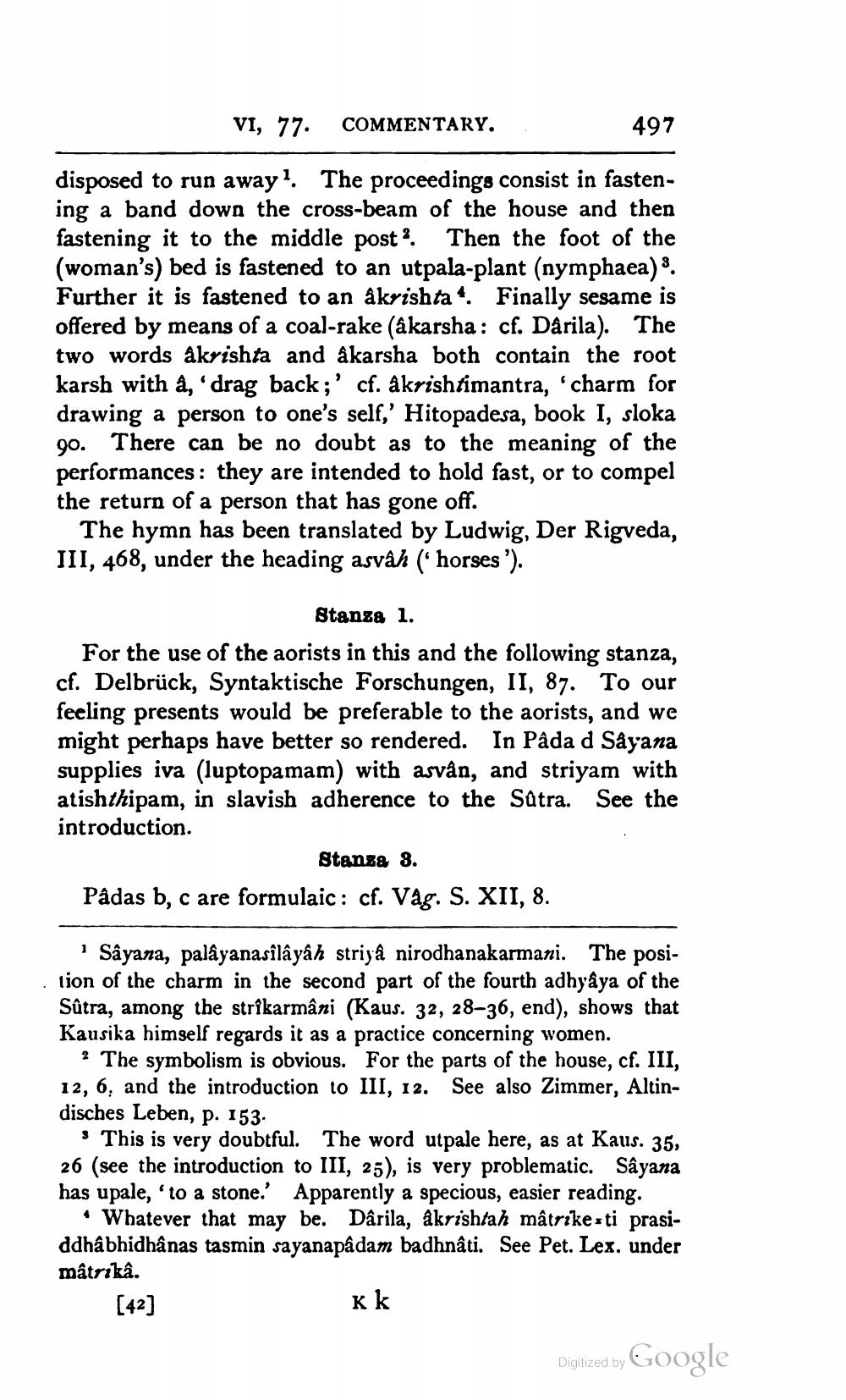________________
VI, 77.
497
disposed to run away1. The proceedings consist in fastening a band down the cross-beam of the house and then fastening it to the middle post 2. Then the foot of the (woman's) bed is fastened to an utpala-plant (nymphaea) 3. Further it is fastened to an âkrishta. Finally sesame is offered by means of a coal-rake (âkarsha: cf. Dârila). The two words âkrishta and âkarsha both contain the root karsh with â, 'drag back;' cf. âkrishtimantra, 'charm for drawing a person to one's self,' Hitopadesa, book I, sloka 90. There can be no doubt as to the meaning of the performances: they are intended to hold fast, or to compel the return of a person that has gone off.
The hymn has been translated by Ludwig, Der Rigveda, III, 468, under the heading asvâh (' horses').
COMMENTARY.
Stanza 1.
For the use of the aorists in this and the following stanza, cf. Delbrück, Syntaktische Forschungen, II, 87. To our feeling presents would be preferable to the aorists, and we might perhaps have better so rendered. In Pâda d Sâyana supplies iva (luptopamam) with asvân, and striyam with atishthipam, in slavish adherence to the Sûtra. See the introduction.
Stanza 3.
Pâdas b, c are formulaic: cf. Våg. S. XII, 8.
1 Sâyana, palâyanasîlâyâh striyâ nirodhanakarmani. The position of the charm in the second part of the fourth adhyâya of the Sûtra, among the strîkarmâni (Kaus. 32, 28-36, end), shows that Kausika himself regards it as a practice concerning women.
2 The symbolism is obvious. For the parts of the house, cf. III, 12, 6, and the introduction to III, 12. See also Zimmer, Altindisches Leben, p. 153.
This is very doubtful. The word utpale here, as at Kaus. 35, 26 (see the introduction to III, 25), is very problematic. Sâyana has upale, 'to a stone.' Apparently a specious, easier reading.
⚫ Whatever that may be. Dârila, âkrishtah mâtrike-ti prasiddhâbhidhânas tasmin sayanapâdam badhnâti. See Pet. Lex. under mâtrikâ.
[42]
k k
Digitized by
Google




